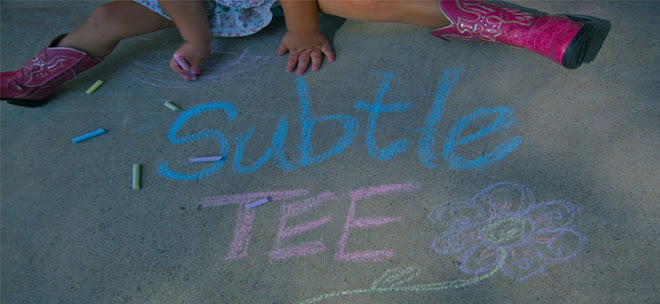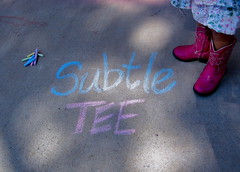And before I start I have a tiny confession to make.... I have to reveal a teeensy little lie here. Ok, not a lie, more of a failure to provide all of the details at once :)
Our "tile time" is really more than just a day as it would appear in my bathroom by Friday ordeal here.
Phew, that feels better!
Yes, it's true. We started the tiling part a while back and have sort of slowly continued working on it here and there, which is partly why it's taken us so long to finish! If you ask me you just need to buckle down and get 'er done in one fell swoop! So what I'm going to show you here is a compilation of our progress since the beginning of construction and mostly throughout this entire week as we worked on bits and pieces of it while others dried, set or hardened etc.
So without further ado...
The Basics of DIY Tiling
1) It is easy
2) It can be a little time consuming
3) And much like sewing, but even more so you gotta measure
Here's what you'll need:
- Tiles
- Thinset or tile adhesive
- Notched trowel
- Sponge
- Tile cutter
- Wet tile saw*
- Carpenter's square or "tri square"
- Tape Measure
- Tile leveler
- Chisels or scrappers
- Grout spacers
- Grout
- Sealer
Here's how we did it:
This is my explanation of how we did it, but for a good video tutorial to help you tackle your own unique space take a look here.
Step 1
Remove the existing flooring, floor boards and any other major objects in the room such a toilet etc.
 Step 2
Step 2Carefully measure the surface area of the room or space to be tiled. Decide what size tiles you would like to have and if you want to include any special designs or contrasting sizes. Once all of these decisions are made you can begin calculating how many tiles you'll want to buy. Most tile stores let you return any unused excess tiles, so over buy just in case you have any breaks or miscalculations (because most people do!).
Cost:
About $0.69-1.99 per square foot for ceramic tile, a little more for porcelain and a double or so more for travertine. The marble comes in sheets of pre-cut cubes for under $10.
Step 3
Do a dry run lay out with the tile on the surface to cover. Don't be afraid to mark on the ground or shower before you place the tile down to help you. Some people use a laser leveler to draw lines on the surface as a guide before beginning.
 When laying out the pieces start from the edge and work your way in, so that the full size tile will be on the edge of the shower or closest to the door of the bathroom floor. It's important to leave about 1 cm spacing around each tile for the grout. Once all the full size pieces are mapped out, begin measuring for the additional cuts.
When laying out the pieces start from the edge and work your way in, so that the full size tile will be on the edge of the shower or closest to the door of the bathroom floor. It's important to leave about 1 cm spacing around each tile for the grout. Once all the full size pieces are mapped out, begin measuring for the additional cuts.Step 4
Use the tile cutter to cut the end and corner pieces of tile.

Step 5
After ALL of the tile has been laid out for a dry run, you can begin mixing the thinset or tile adhesive to lay the tiles down.
During this remodel we discovered the wonders and joys of pre-mixed tile adhesive!!
 This stuff is almost double the cost of the powder, but more valuable than it's weight in gold! Since this stuff doesn't harden quickly, so you can start and stop tiling at your leisure, which we know is a beautiful luxury when you're working with the kidlets at your feet.
This stuff is almost double the cost of the powder, but more valuable than it's weight in gold! Since this stuff doesn't harden quickly, so you can start and stop tiling at your leisure, which we know is a beautiful luxury when you're working with the kidlets at your feet.Step 6
Use the notched trowel to lay out the tile adhesive on the surface with evenly distributed grooves going the same direction.
 It's important to make sure there is an even amount of adhesive covering the surface, so that the tiles will all be level as you lay them down.
It's important to make sure there is an even amount of adhesive covering the surface, so that the tiles will all be level as you lay them down. If necessary, stop and scrap or wipe off any excess with the edge of the trowel or a sponge to even it out.
If necessary, stop and scrap or wipe off any excess with the edge of the trowel or a sponge to even it out. Always use a leveler to double check the alignment of the tiles before the adhesive sets.
Always use a leveler to double check the alignment of the tiles before the adhesive sets. Another method is to plop to stuff right onto the back of the tile and smooth it out from there. This works nicely in hard to reach areas, but it's easier to get a level surface if you rake the adhesive directly onto the surface to be tiled.
Another method is to plop to stuff right onto the back of the tile and smooth it out from there. This works nicely in hard to reach areas, but it's easier to get a level surface if you rake the adhesive directly onto the surface to be tiled.Step 7
Put a tile spacer in between each neighboring tile to keep them evenly spaced across the floor or shower.
 This is a good point to use your scraper or sponge to clean up any seeping adhesive between the cracks while it's still wet. You need ample clean space between the tiles and enough clear depth to fill it with grout.
This is a good point to use your scraper or sponge to clean up any seeping adhesive between the cracks while it's still wet. You need ample clean space between the tiles and enough clear depth to fill it with grout.Step 8
Allow the tiles and adhesive or thinset to completely set for at least 48 - 72 hours without walking on them to ensure they stay level.
Once they have thoroughly dried, start removing the tile spacers and scrapping off any excess adhesive from the spaces between or the surface of the tiles.
 Jonah was absolutely dying to get in there and help the entire time. There's just something about that little man... I have a sneaking suspicion that he's bound to be Mr. Fixer Uper like his daddy! Let's hope so :)
Jonah was absolutely dying to get in there and help the entire time. There's just something about that little man... I have a sneaking suspicion that he's bound to be Mr. Fixer Uper like his daddy! Let's hope so :)Step 9
Mix the grout in relatively small amounts that you are sure you'll use in that setting, because it will dry up fairly quickly.
 Use the smooth side of the trowel to spread the grout over the tiles, making sure to get it between each tile.
Use the smooth side of the trowel to spread the grout over the tiles, making sure to get it between each tile. Use the flat edge to scrap it across the tiles and into the spaces as much as possible.
Use the flat edge to scrap it across the tiles and into the spaces as much as possible.
Step 10
Use a damp sponge to clean off the excess grout from the surface of the tiles.
 Repeat a few times until the grout is completely off the tile surfaces and fully compacted into the spaces.
Repeat a few times until the grout is completely off the tile surfaces and fully compacted into the spaces.Step 11
Allow the grout to dry for 72 hours and cover with a protective sealer.
AND DONE!
Jeez, my fingers are about to fall off from all this typing! Hope you made it to the end here, but now you're really going to love me, because I just have to make you wait to see the finished tile until the unveiling tomorrow afternoon :)
What fun would a sneak peak be? The tiling is the biggest part!


























This comment has been removed by the author.
ReplyDeleteI have a client who used a dark slate color in their kitchen and the finished product looks like old, aged and grayed barnwood Flat Floor. I love it and the flooring totally "makes" the kitchen!!
ReplyDelete